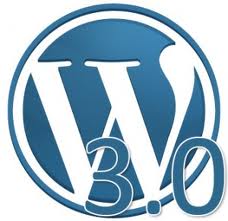Since WordPress 3.0 was released in June 2010, there have been three additional releases of the software with the most recent version, WordPress 3.2.1 released in July 2011. WordPress 3.0 was the thirteenth version of WordPress to be released and stared the new multi-site functionality.
Since WordPress 3.0, the creators of WordPress have worked to increase the number of themes, plugins, WordPress widgets and other tools that can be used to build a user’s WordPress blog. In the past year WordPress has worked to expand and improve its services now that the service millions of web users. The WordPress 3.0 version was known for merging WordPress and WordPress MU, which then created the new multi-site functionality. The WordPress 3.0 version also address number under-the-hood tweaks and created the new default theme called Twenty Ten with new theme APIs.
One of the biggest turning points for WordPress development came with WordPress 3.0. When developers created this version, the multi-user blogger idea came about to configure the blog to use separate database tables. The fork of the multi-user program was created to allow multiple blogs to exist virtually within the other blog through installation that is able to be administered by a centralized maintainer. The WordPress MU makes this even more possible with those who have a website to host their own blogging community as well as control and moderate all of the blogs all from a single dashboard. Essentially WordPress 3.0 made the overall concept of Content System Management that much easier to use and even more functional to use with more than one blog.
Since WordPress 3.0, the WordPress 2.1, 3.2 and the 3.2.1 versions have been released. The development of WordPress features and services have grown to include the addition of the new Admin Bar, which displays all of the blog pages when the blog administrator is logged in to the WordPress account. Through the Admin Bar, admins have more access to many critical WordPress functions like comments and updates. With this version, internal linking capabilities were developed along with a newly streamlined writing interface and other changes. With each new and updated version of WordPress, the folks at WordPress continue to make WordPress more functional and secure for each member of the blogging community.
One of the conveniences of using the most updated version of WordPress is that there are always new themes, plugins, widgets and other WordPress services and features that are available. However, this can be a downside too if you want to use a theme that is outdated or meant to be for an older version of WordPress like WordPress 3.0. However, WordPress makes it easy for users to downgrade their current version to an older version in these types of cases. If you are interested in downgrading your WordPress version, it is easy to do, however it might be a better idea to upgrade to the newest version and change your themes to adapt to the expanding edition of WordPress. Updates in security and reliability with WordPress are another reason why upgrading to the newest version of WordPress is a good idea.
